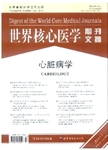通过对心脏起搏器经胸阻抗信号变化的可视性分析诊断睡眠呼吸障碍
Diagnosis of sleep-related breathing disorders by visual analysis of transthoracic impedance signals in pacemakers作者机构:Cardiovascular Center University Hospital Zurich Rmistrasse 100 CH-8091 Zürich Switzerland Dr.
出 版 物:《世界核心医学期刊文摘(心脏病学分册)》 (Digest of the World Core Medical Journals(Cardiology))
年 卷 期:2005年第1卷第3期
页 面:34-34页
学科分类:1002[医学-临床医学] 100213[医学-耳鼻咽喉科学] 10[医学]
主 题:睡眠呼吸障碍 可视性分析 信号变化 每分通气量 感知器 监测法
摘 要:Background-Minute ventilation sensors of cardiac pacemakers measure ventilation by means of transthoracic impedance changes between the pacemaker case and the electrode tip. We investigated whether this technique might detect sleep-related breathing disorders. Methods and Results-In 22 patients, analog waveforms of the transthoracic impedance signal measured by the pacemaker minute ventilation sensor over the course of a night were visualized, scored for apnea/hypopnea events, and compared with simultaneous polysomnography. Analysis of transthoracic impedance signals correctly identified the presence or absence of moderate to severe sleep apnea (apnea/ hypopnea index, AHI 20 h-1) in all patients (receiver operating characteristics, ROC=10.). The ROC for AHI scores of ≥5 h-1 and 10 h-1 showed an area under the curve of 0.95, P 0.005, and 0.97, P 0.0001, respectively. Accuracy over time assessed by comparing events per 5-minute epochs was high (Cronbach αreliability coefficient, 0.85; intraclass correlation, 0.73). Event-by-event comparison within ±15 seconds revealed agreement in 81%(κ, 0.77; P 0.001). Conclusions-Detection of apnea/hypopnea events by pacemaker minute ventilation sensors is feasible and accurate compared with laboratory polysomnography. This technique might be useful to screen and monitor sleep-related breathing disorders in pacemaker patients.



